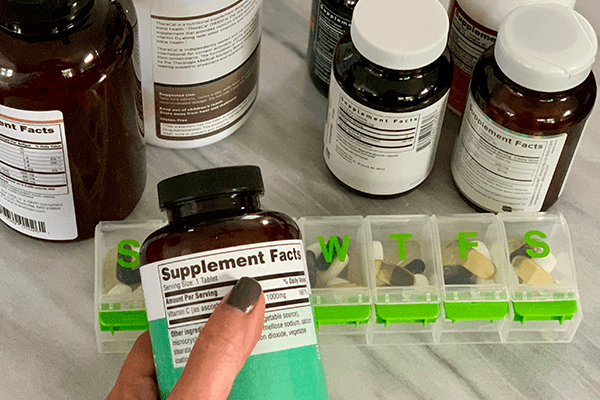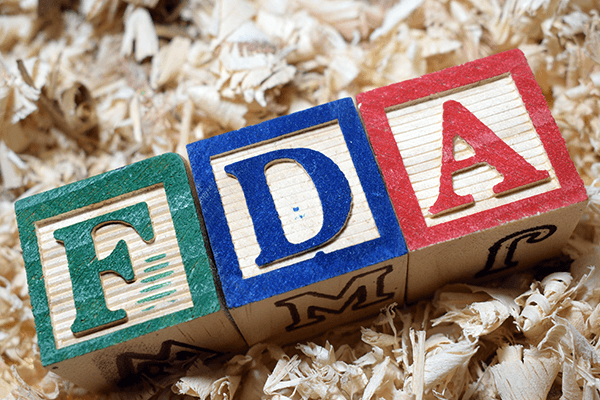Nutrition labels provide valuable information about the nutrients contained in packaged foods and beverages, helping consumers make informed decisions about their diets. The U.S. Food and Drug Administration (FDA) has established rounding rules to ensure that the information provided on nutrition labels is accurate and consistent. In this blog, we’ll explore the FDA Nutrition Label Rounding Rules in detail.
What are the FDA Nutrition Label Rounding Rules?
The FDA Nutrition Label Rounding Rules specify how nutrient values should be rounded when they appear on nutrition labels. These rules are designed to ensure that the nutrient values reported on the label are as accurate as possible while also being easy for consumers to read and understand.
According to the FDA, nutrient values should be rounded to the nearest whole number, except in cases where the value is less than 1 gram or 1% of the daily value (DV) for a given nutrient. In these cases, the value should be rounded to the nearest 0.1 gram or 1% of the DV.
For example, if a serving of cereal contains 2.3 grams of fat and 0.6 grams of saturated fat, the values should be rounded to 2 grams and 1% of the DV for fat and 0.5 grams and 3% of the DV for saturated fat.

The rounding rules also apply to the percent DV values that are listed on nutrition labels. Percent DV values are calculated based on the recommended daily intake for a given nutrient, and are intended to help consumers understand how much of a nutrient is contained in a serving of food or beverage. Percent DV values should be rounded to the nearest whole number.
FDA Rounding Rules Table
The following table provides rounding rules for declaring nutrients on the nutrition label or in labelling according to the FDA:
| Nutrient | Increment Rounding | Insignificant Amount |
| Calories Calories from Fat Calories from Saturated Fat | < 5 cal – express as 0 ≤50 cal – express to nearest 5 cal increment >50 cal – express to nearest 10 cal increment | < 5 cal |
| Total Fat Saturated Fat Trans Fat Polyunsaturated Fat Monounsaturated Fat | < 0.5 g – express as 0 < 5 g – express to nearest .5g increment ≥5 g – express to nearest 1 g increment | < 0.5 g |
| Cholesterol | < 2 mg – express as 0 2 -5 mg – express as “less than 5 mg“ | < 2 mg |
| Sodium | < 5 mg – express as 0 5 -140 mg – express to nearest 5 mg increment >140 mg – express to nearest 10 mg increment | < 5 mg |
| Total Carbohydrate Dietary Fiber Sugars | < 0.5 g – express as 0 < 1 g – express as “Contains less than 1 g” or “less than 1 g” ≥1 g – express to nearest 1 g increment | < 1 g |
| Soluble and Insoluble Fiber; Sugars Sugar Alcohol Other Carbohydrate | < 0.5 g – express as 0 < 1 g – express as “Contains less than 1 g “ or “less than 1 g” ≥1 g – express to nearest 1 g increment | < .5 g |
| Protein | < 0.5 g – express as 0 < 1 g – express as “Contains less than 1 g” or “less than 1 g” or to 1 g if .5 g to < 1 g ≥1 g – express to nearest 1 g increment | < 1 g |
| When declaring nutrients other than vitamins and minerals that have RDIs as a % DV | express to nearest 1% DV increment | < 1% DV |
| Vitamins & Minerals (express as % DV) | < 2% of RDI may be expressed as: (1) 2% DV if actual amount is 1% or more (2) 0 (3) an asterisk that refers to statement “Contains less than 2% of the Daily Value of this (these) nutrient(s) “ (4) for Vit A, C, calcium, iron: statement “Not a significant source of ________ (listing the vitamins and minerals omitted)” ≤10% of RDI -express to nearest 2% DV increment > 10% -50% of RDI -express to nearest 5% DV increment > 50% of RDI -express to nearest 10% DV increment | < 2% RDI |
| Mandatory Vitamin/Mineral | Rounding Rule |
| Potassium | Nearest 10 mg |
| Calcium | Nearest 10 mg |
| Iron | Nearest 0.1 mg |
| Vitamin D | Nearest .1 mcg |
Why are the FDA Nutrition Label Rounding Rules important?
The FDA Nutrition Label Rounding Rules are important because they help ensure that the nutrient values reported on nutrition labels are accurate and consistent. This is critical for consumers who rely on nutrition labels to make informed decisions about their diets.
Inaccurate nutrient values can lead to confusion and misinformation, which can ultimately negatively impact public health. For example, if a food product is labelled as low in fat but actually contains a significant amount of fat, consumers who are trying to limit their fat intake may unknowingly consume more fat than they intended.
By requiring nutrient values to be rounded consistently and standardized, the FDA helps ensure that nutrition labels provide accurate and reliable information to consumers.

Conclusion
The FDA Nutrition Label Rounding Rules are an important part of the nutrition labelling process. By ensuring that nutrient values are rounded consistently and standardized, these rules help ensure that consumers have access to accurate and reliable information about the nutrient content of the foods and beverages they consume. As a result, consumers are better equipped to make informed decisions about their diets, and public health is better protected.
If this is all a bit too much, and you’re wondering if there is an easier way to apply the rules, then you’ve come to the right place! MenuSano is the fastest and easiest way to create Nutrition Labels for all your recipes and dishes – and yes, it will make all the necessary rounding rules for you. Start a Free Trial Today!




















